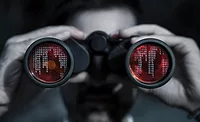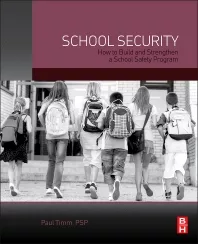A Training Evolution

Still “contract agencies are dropping the ball when it comes to providing adequate training for their men and women,” contends Lawrence Fennelly, CPO and editor of the third edition of Effective Physical Security. “On-the-job-training has flaws and is outdated, plus is unacceptable.”
The industry has come a long way in terms of training since the old days of role-call training, but is it far enough?
No doubt, simply filling a room with participants and plugging in a video that may very likely be outdated is not enough. In many cases, instructors give the trainee a copy of a ten-question exam and instruct them to fill in the blanks during the watching of the video. Is that a viable pedagogy? Better question: were that trainee later to testify in a court of law as to the extent of his or her training, would a jury believe the security officer capable of fulfilling duties?

Training resources
Many companies rely too heavily on such methods of delivery, which are easy for a trainer to use, but possibly redundant and ineffective. Any professional trainer will admit that videotape plays only a supporting role to the main part of the lesson. It is only meant to accompany a lecture and to emphasize or drive home a point.Is the cost of training part of the problem? Sure, professional training is expensive, but the cost being referred to is that of increased wage demands by an educated security officer contingent. It only makes sense that professionally trained security officers should receive more money. In that light, some may hold back on training to prevent increasing expenses.
“Some security managers have a hidden agenda and really don’t want people to advance,” said Chris Hertig, CPP, CPO, and professor at York College of Pennsylvania “Unless they embrace wholeheartedly the professional development of their subordinates, protection officers and the security profession will not achieve professional status.”

“Issues of professionalism and increasing training standards are compounded by a free market economy,” said Glen Kitteringham, manager of safety and security for Brookfield Property Management of Calgary, Alberta. “Competition has kept costs down. Some purchasers of security services desire only ‘a warm body’ and expect nothing else, nor will they pay for more.”
The danger of a lack of training is on the job.
“Security officers are sometimes expected to react to situations that should only be handled by well-trained police officers,” added Larry Leclair of Miami Dade Community College. “If we recognize the demand for a high level response, we need to provide training at a higher level. Additional training protects the individual officer, the employing agency, the client and the general population. Is there a reason to not provide a higher level of training other than because professional training is more expensive?”

A matter of money
“A little money spent on the essentials of training can result in a greatly reduced need for a high quality highly trained police response,” agreed Chuck Thibodeau, CPP, CSS, adjunct professor at St. Cloud (Minn.) State University. “Security essentials, when taught properly, will instill in the officer the importance of pro-active prevention and the need to peak one’s observing and reporting skills. If we teach the officer how to establish and maintain a ‘stable relatively predictable environment,’ a standard first written about by Green and Farber in 1978 in Introduction to Security, Principles and Practices, the time spent by security officers responding to unpredictable loss event occurrences, calling for a highly skilled police response, will be greatly minimized. In most of these cases that response should be transferred to the public law enforcement officer and not handled by the security officer.”
Sidebar: The Danger of In-house Training
Jelly-filled donuts fill the table at the back of the poorly lit staff room. The smell of overbrewed coffee fills the makeshift training facility.The trainer who enters the room has good intentions. Freshly hired security officers, already struggling to remain alert, are ushered into the classroom. This is where they are going to spend the next eight hours – like it or not. At the testing conclusion of training, the students walk out holding printed and signed certificates of completion.
Not many years ago, this was considered and accepted as training by most of the security industry. Unfortunately, for some, it still is.
Side bar: The Double-danger of On-the-job Training
A person comes into the security company office, fills out an application, receives an interview then a uniform, and, in some cases, a weapon. This sudden security officer then gets a piece of paper with the address of a company on it and a time to be there later that same day to go on duty. The whole process would take less than two hours with most of that time spent finding a set of uniform pants and shirt that fit. The training in those days: OJT or on-the-job training. If lucky, a new officer would meet an officer who had not left yet and the new recruit would be taken on a ten minute round of the facility. That’s it – all trained!Obviously, little emphasis was placed on adequate training. The role and the responsibilities of a security officer were just as demanding as they are today, but end user corporations were naive about the need for well-trained and educated officers.
Back then, “other than a few responsible contract security companies and a number of proprietary security directors, no one else seemed to be doing much to increase the level of training and education of those starting to work as security officers,” said Jorge J. Giusti, CPP, director of security for a Miami-based real estate management company.
Looking for a reprint of this article?
From high-res PDFs to custom plaques, order your copy today!







